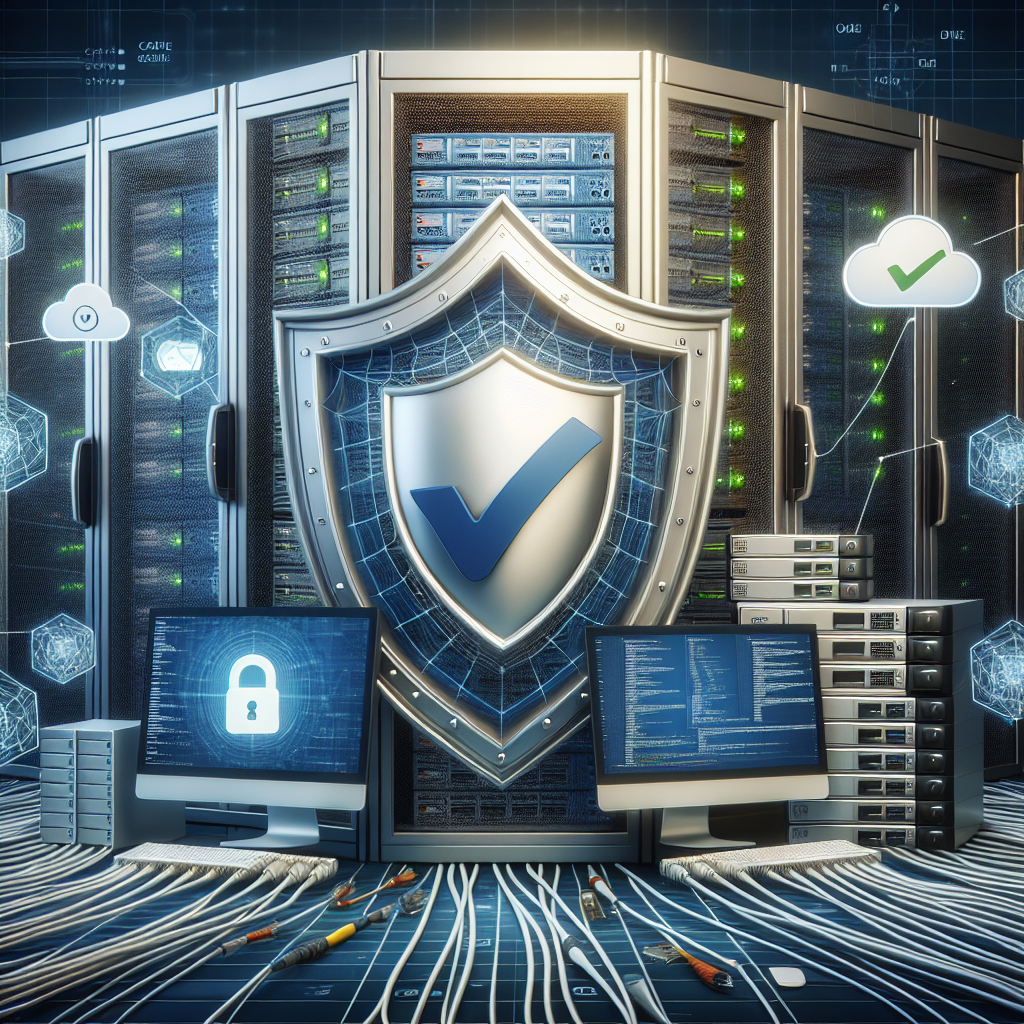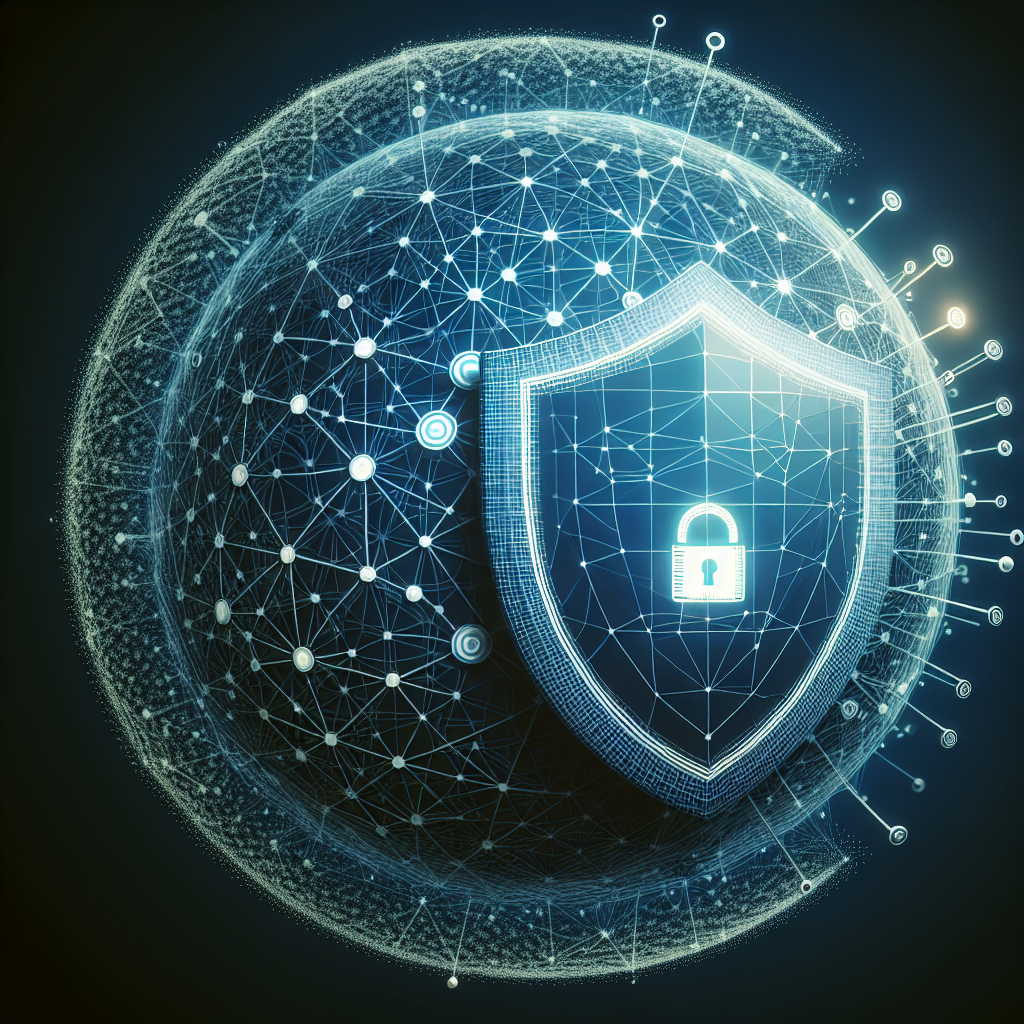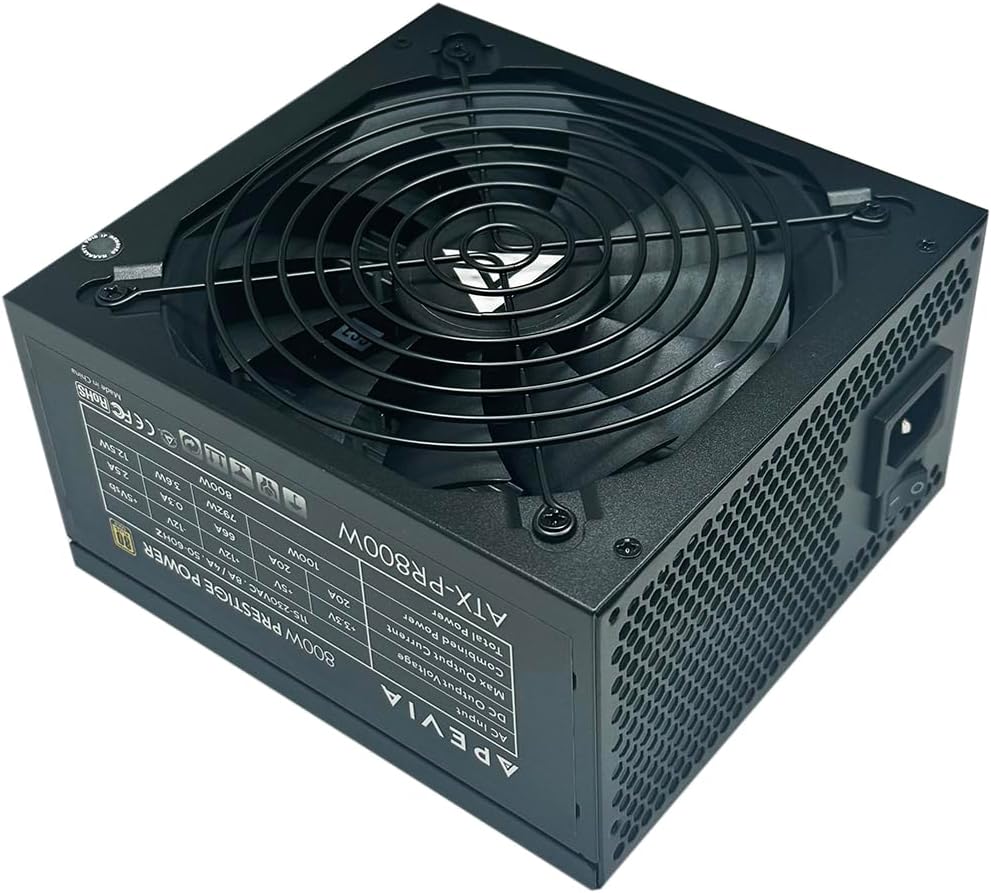Your cart is currently empty!
Tag: Compliance

Ensuring Compliance with Service Level Agreements
Service Level Agreements (SLAs) are essential contracts that define the level of service a customer can expect from a service provider. These agreements are crucial in ensuring that both parties are clear on the expectations and responsibilities involved in the service delivery process. However, simply having an SLA in place is not enough – it is equally important to ensure compliance with the terms of the agreement.There are several key steps that can be taken to ensure compliance with SLAs:
1. Clearly define the SLA: The first step in ensuring compliance with an SLA is to clearly define the terms of the agreement. This includes outlining the services to be provided, the expected performance levels, and the responsibilities of both parties. By clearly defining the SLA, both parties can have a clear understanding of what is expected of them.
2. Monitor performance: Regular monitoring of performance is essential to ensure compliance with an SLA. This can be done through the use of key performance indicators (KPIs) that measure the performance of the service provider against the agreed-upon standards. By monitoring performance regularly, any deviations from the agreed-upon standards can be identified and addressed promptly.
3. Communicate effectively: Effective communication is key to ensuring compliance with an SLA. Both parties should communicate regularly to discuss any issues or concerns that may arise during the service delivery process. This open line of communication can help to address any issues before they escalate and ensure that both parties are working towards the same goals.
4. Implement a feedback mechanism: Implementing a feedback mechanism can help to ensure compliance with an SLA by providing a way for customers to provide feedback on the service they have received. This feedback can be used to identify any areas for improvement and make necessary changes to ensure that the agreed-upon standards are being met.
5. Review and update the SLA: SLAs should be reviewed regularly to ensure that they are still relevant and effective. As business requirements and technologies evolve, it is important to update the SLA to reflect these changes. By regularly reviewing and updating the SLA, both parties can ensure that the agreement remains effective in meeting their needs.
In conclusion, ensuring compliance with SLAs is essential for both service providers and customers. By clearly defining the terms of the agreement, monitoring performance, communicating effectively, implementing a feedback mechanism, and regularly reviewing and updating the SLA, both parties can work together to ensure that the agreed-upon standards are being met. By following these steps, compliance with SLAs can be achieved, leading to improved service delivery and customer satisfaction.

Ensuring Compliance with Service Level Agreements (SLAs) for Customer Satisfaction
Service Level Agreements (SLAs) are essential documents that outline the level of service that a customer can expect from a service provider. They serve as a contract between the two parties, setting clear expectations and performance metrics. Ensuring compliance with SLAs is crucial for maintaining customer satisfaction and trust.To ensure compliance with SLAs, service providers must first clearly define the terms and conditions of the agreement. This includes specifying the services to be provided, the performance metrics that will be used to measure success, and the consequences of failing to meet these metrics. It is important to communicate these terms effectively to both the customer and the service team responsible for delivering the services.
Once the SLA has been established, it is important for service providers to regularly monitor and track performance against the agreed-upon metrics. This can be done through the use of key performance indicators (KPIs) and regular reporting. By keeping track of performance metrics, service providers can quickly identify any deviations from the agreed-upon standards and take corrective action as needed.
In addition to monitoring performance, service providers should also have a system in place for addressing any issues that arise. This can include a process for escalating problems to higher levels of management, as well as a system for tracking and resolving customer complaints. By addressing issues promptly and effectively, service providers can demonstrate their commitment to meeting the terms of the SLA and maintaining customer satisfaction.
Regular communication with customers is also key to ensuring compliance with SLAs. Service providers should provide regular updates on performance and engage with customers to gather feedback on the quality of service being provided. This can help to identify any areas for improvement and demonstrate a commitment to meeting customer needs.
Ultimately, ensuring compliance with SLAs is essential for maintaining customer satisfaction and trust. By clearly defining the terms of the agreement, monitoring performance against agreed-upon metrics, addressing issues promptly, and communicating effectively with customers, service providers can demonstrate their commitment to delivering high-quality service and meeting customer expectations. By doing so, service providers can build strong relationships with their customers and drive long-term success for their business.

Ensuring Compliance with Service Level Agreements (SLAs) in Service Delivery
Service Level Agreements (SLAs) are crucial documents that outline the expectations and responsibilities of both parties involved in a service delivery agreement. They establish clear guidelines for the quality and timeliness of services provided, ensuring that both parties are on the same page and understand what is required of them.Ensuring compliance with SLAs is essential for maintaining a successful and productive working relationship between service providers and their clients. Failure to meet SLA requirements can result in dissatisfaction, loss of trust, and potentially legal consequences. Therefore, it is essential for service providers to take proactive steps to ensure compliance with SLAs.
The first step in ensuring compliance with SLAs is to clearly define and communicate the terms of the agreement to all parties involved. This includes outlining the specific services to be provided, the expected quality standards, and the timeframe in which services are to be delivered. It is important for both parties to fully understand and agree to the terms of the SLA before entering into a service delivery agreement.
Once the SLA has been established, it is important for service providers to monitor and track their performance against the agreed-upon metrics. This can be done through regular performance reviews, feedback from clients, and the use of performance monitoring tools. By closely monitoring their performance, service providers can quickly identify any areas where they are falling short of the SLA requirements and take corrective action.
In the event that a service provider is unable to meet the requirements of the SLA, it is important for them to communicate this to the client as soon as possible. Transparency and open communication are key in maintaining a positive working relationship with clients. Service providers should work with the client to address any issues and come up with a plan to rectify the situation and prevent future breaches of the SLA.
It is also important for service providers to regularly review and update their SLAs to ensure they remain relevant and effective. As business needs and technology evolve, SLAs may need to be adjusted to reflect these changes. By regularly reviewing and updating SLAs, service providers can ensure that they continue to meet the needs and expectations of their clients.
In conclusion, ensuring compliance with SLAs is essential for maintaining a successful service delivery relationship. By clearly defining and communicating the terms of the SLA, monitoring performance against agreed-upon metrics, communicating openly with clients, and regularly reviewing and updating SLAs, service providers can ensure that they meet the expectations of their clients and deliver high-quality services.

IT Infrastructure Management: Ensuring Security and Compliance
In today’s digital age, businesses rely heavily on their IT infrastructure to operate efficiently and effectively. However, with the increasing complexity of technology systems and the rise of cyber threats, ensuring the security and compliance of IT infrastructure has become a top priority for organizations.IT infrastructure management involves overseeing the design, deployment, maintenance, and optimization of an organization’s technology systems. This includes monitoring network performance, managing hardware and software assets, and ensuring data security and compliance with industry regulations.
One of the key aspects of IT infrastructure management is ensuring the security of the organization’s systems and data. Cyber threats such as malware, ransomware, and phishing attacks pose a significant risk to businesses, and a breach can result in financial losses, reputational damage, and legal consequences. By implementing robust security measures, such as firewalls, encryption, and intrusion detection systems, organizations can protect their IT infrastructure from unauthorized access and malicious attacks.
In addition to security, organizations must also ensure compliance with industry regulations and standards. Depending on the nature of the business, companies may be subject to various regulations such as HIPAA for healthcare organizations, PCI DSS for businesses that process credit card payments, or GDPR for companies that handle personal data of European Union residents. Failure to comply with these regulations can result in hefty fines and legal penalties.
To effectively manage IT infrastructure security and compliance, organizations should implement a comprehensive strategy that includes the following key components:
1. Risk assessment: Conducting regular risk assessments to identify potential vulnerabilities in the IT infrastructure and prioritize security measures based on the level of risk.
2. Security policies: Developing and enforcing security policies that outline the organization’s expectations for employee behavior, data handling, and access control.
3. Security awareness training: Providing training to employees on best practices for cybersecurity, such as how to identify phishing emails and secure passwords.
4. Security monitoring: Implementing tools and systems to monitor network traffic, detect security incidents, and respond to threats in real-time.
5. Compliance audits: Conducting regular audits to ensure that the organization is following industry regulations and standards, and taking corrective actions as needed.
Overall, IT infrastructure management plays a crucial role in ensuring the security and compliance of an organization’s technology systems. By implementing robust security measures, enforcing compliance with regulations, and staying vigilant against cyber threats, businesses can protect their IT infrastructure and safeguard their sensitive data from potential breaches.

How Network Management Can Improve Security and Compliance
Network management is a critical aspect of any organization’s IT infrastructure, as it ensures that all network devices and systems are functioning properly and efficiently. However, network management is not just about ensuring smooth operations – it also plays a crucial role in improving security and compliance within an organization.By implementing effective network management practices, organizations can better protect their sensitive data and ensure that they are compliant with industry regulations and standards. Here are some ways in which network management can improve security and compliance:
1. Monitoring and detection of security threats: Network management tools allow organizations to monitor their network traffic and detect any unusual or suspicious activity. By continuously monitoring network traffic, organizations can quickly identify and respond to security threats, such as malware, hackers, and unauthorized access attempts. This proactive approach to security helps organizations prevent data breaches and protect their valuable information.
2. Patch management: Network management tools can help organizations keep their systems and devices up-to-date with the latest security patches and updates. By regularly patching vulnerabilities in their network infrastructure, organizations can reduce the risk of cyber attacks and ensure that their systems are secure and compliant with industry regulations.
3. Access control: Network management tools can also help organizations enforce access control policies to restrict access to sensitive data and systems. By implementing role-based access control and monitoring user activity, organizations can prevent unauthorized access and ensure that only authorized users have access to critical resources.
4. Compliance reporting: Network management tools can generate detailed reports on network performance, security incidents, and compliance status. These reports can help organizations demonstrate compliance with industry regulations, such as the General Data Protection Regulation (GDPR) or the Health Insurance Portability and Accountability Act (HIPAA), and provide evidence of their security measures to auditors and regulators.
5. Incident response: In the event of a security breach or compliance violation, network management tools can help organizations quickly respond to the incident and mitigate the impact. By providing real-time alerts and notifications, organizations can take immediate action to contain the threat, investigate the root cause, and implement remediation measures to prevent future incidents.
In conclusion, network management plays a vital role in improving security and compliance within an organization. By implementing effective network management practices, organizations can proactively protect their data, detect and respond to security threats, and ensure compliance with industry regulations. Investing in network management tools and technologies is essential for organizations looking to enhance their security posture and maintain regulatory compliance in today’s ever-evolving threat landscape.

Remote Monitoring: Improving Safety and Compliance in the Workplace
Remote monitoring is a valuable tool that can improve safety and compliance in the workplace. By using technology to track and monitor various aspects of operations, businesses can ensure that they are meeting regulatory requirements and keeping their employees safe.One area where remote monitoring can have a significant impact is in the management of hazardous materials. By using sensors and other monitoring devices, companies can track the storage and use of dangerous chemicals and ensure that they are being handled in a safe and compliant manner. This can help prevent accidents and ensure that employees are not exposed to harmful substances.
Remote monitoring can also be used to track the condition of equipment and machinery in the workplace. By monitoring things like temperature, pressure, and vibration levels, businesses can identify potential problems before they lead to breakdowns or accidents. This can help prevent costly downtime and ensure that equipment is being maintained in accordance with regulations.
In addition to improving safety, remote monitoring can also help businesses stay compliant with various regulations and standards. By tracking data in real-time and generating reports, companies can demonstrate that they are meeting requirements and taking steps to ensure the health and safety of their employees.
One of the key benefits of remote monitoring is that it allows businesses to gather data and insights that would be difficult or impossible to obtain through manual methods. By tracking trends and patterns over time, companies can identify areas for improvement and make informed decisions about how to enhance safety and compliance in the workplace.
Overall, remote monitoring is a powerful tool that can help businesses improve safety and compliance in the workplace. By using technology to track and monitor various aspects of operations, companies can identify potential problems, prevent accidents, and ensure that they are meeting regulatory requirements. Investing in remote monitoring can not only help protect employees and assets, but also improve overall efficiency and productivity in the workplace.
Nationwide Injunction on Corporate Transparency Act Compliance
Texas Top Cop Shop, Inc., et al. v. Garland, et al.
On December 3, 2024 the U.S. District Court for the Eastern District of Texas issued a preliminary injunction effective nationwide staying the compliance deadline under the Corporate Transparency Act. The Court, in its decision, found that it is likely the plaintiffs in the case will succeed on the merits of their argument that Congress exceeded its powers in enacting the statute. After examining the plaintiff’s standing, the Court found that imminent harm would occur and that the Government had failed to demonstrate the constitutionality of the statute under both the Commerce Clause and under the Necessary and Proper Clause of the Constitution.
While the Court noted the statute’s laudable purpose of preventing money laundering and illicit use of anonymity provided under the corporate veil, the Court looked at the fact that the statute did not regulate a commercial activity, or an instrument of interstate commerce, but rather than it eroded the dual system of power in the United States and sought to expand Congressional authority into a realm (corporation law) that is firmly established as being within the purview of the states.
The Department of Justice, on behalf of the Department of the Treasury, filed an appeal on December 5, 2024. FinCEN notes on its website that it will comply with the injunction as long as it remains in effect. As a result, reporting companies are not currently required to file beneficial information and will not be subject to liability while the preliminary injunction remains in effect. Voluntary submission is still available.
What’s next?
Given the injunction is a nationwide prohibition on requiring reporting companies to submit BOI, we believe it would be best practice to refrain from making new filings to FinCEN for the current time. If the injunction is lifted, it is likely some form of a delay will be granted for filers. However it is too early to judge if such relief will be granted by FinCEN, or what period of time FinCEN may grant. The Court that issued the injunction did note that final resolution on the merits will take some time. Any immediate change in the Court’s decision depends on whether the Government seeks expedited relief at the Fifth Circuit Court of Appeals. Our advice is that reporting companies should continue to prepare their paperwork to be in a position to file and comply with the CTA’s reporting obligations in the event the injunction is lifted.
We will continue to monitor any change that results and advise accordingly.
In a recent development, a nationwide injunction has been issued on the enforcement of the Corporate Transparency Act (CTA) compliance requirements. The CTA, which was enacted to combat money laundering and terrorist financing, mandates certain corporations to report their beneficial ownership information to the Financial Crimes Enforcement Network (FinCEN).However, a federal judge has put a halt to the implementation of these requirements, citing concerns over privacy rights and the burden it places on small businesses. The injunction means that corporations are not required to comply with the CTA until further notice.
This decision has sparked debate among lawmakers, with some arguing that the CTA is crucial for national security and financial integrity, while others believe it infringes on individual rights and imposes unnecessary red tape on businesses.
It remains to be seen how this legal battle will unfold and what the implications will be for corporate transparency and anti-money laundering efforts. Stay tuned for updates on this developing story.
Tags:
- Nationwide Injunction
- Corporate Transparency Act
- Compliance
- Business Regulations
- Legal Compliance
- Transparency Laws
- Corporate Governance
- Regulatory Compliance
- Compliance Updates
- Corporate Transparency Act Compliance
#Nationwide #Injunction #Corporate #Transparency #Act #Compliance

The Importance of VESA Compliance in Display Technology
When it comes to display technology, one of the key factors that often gets overlooked is VESA compliance. VESA, which stands for the Video Electronics Standards Association, is a non-profit organization that sets industry standards for displays and display interfaces. Ensuring that a display is VESA compliant is crucial for a variety of reasons, including compatibility, performance, and safety.One of the most important reasons to ensure VESA compliance in display technology is compatibility. VESA standards ensure that displays are compatible with a wide range of devices, including computers, laptops, gaming consoles, and more. This means that users can easily connect their devices to a VESA-compliant display without worrying about compatibility issues. This can save time and frustration for both consumers and manufacturers.
Another key reason for VESA compliance is performance. VESA standards ensure that displays meet certain performance criteria, such as resolution, refresh rate, and color accuracy. By adhering to these standards, manufacturers can guarantee that their displays deliver a high-quality viewing experience for users. This can result in sharper images, smoother motion, and more vibrant colors, enhancing the overall user experience.
Additionally, VESA compliance is important for safety reasons. VESA standards ensure that displays meet certain safety requirements, such as electromagnetic interference (EMI) and radio frequency interference (RFI) regulations. By adhering to these standards, manufacturers can ensure that their displays are safe for use in a variety of environments, including homes, offices, and public spaces.
In conclusion, VESA compliance is crucial for ensuring compatibility, performance, and safety in display technology. By adhering to VESA standards, manufacturers can provide users with a high-quality viewing experience while also ensuring that their displays are safe and compatible with a wide range of devices. Ultimately, VESA compliance plays a key role in the success and reliability of display technology.
#Importance #VESA #Compliance #Display #Technology,vesa
Apevia ATX-PR800W Prestige 800W 80+ Gold Certified, RoHS Compliance, Active PFC ATX Gaming Power Supply
Price: $66.99
(as of Dec 31,2024 17:01:53 UTC – Details)Product Description




Apevia’s Prestige line of power supplies brings great power and efficiency to your computer system. 80+ Gold certified, and designed for elegant form and function, they bring it to life. Supporting the 12v2.3 standard and single rail setup, it’s updated for modern platforms. Boasting a 135mm silent black fan, it keeps everything inside cool. The Prestige line also uses Active PFC, with a 99% factor correction, boosting performance and saving energy. No toggle switch included, the power supply automatically switches between 110V and 230V depending on the power grid its attached to. ROHS certified.
600W Power with 13.5cm black fan80+ Gold & ROHS certifiedHigh stability with 5% tolerance of 5V, 3.3V & 12V outputHigh quality components and housingUniversal AC input by active PFC (99%PF Typical)Package contentsHeavy-duty protections, including OVP (Over Voltage Protection), OPP (Over Power Protection), SCP (Short Circuit Protection)
IMPORTANT: The power supply will not power on simply by connecting the power cord to both the power supply and wall outlet. Ensure that all the power supply cables are properly connected to the PC for it to power on.
IMPORTANT: The 8pin CPU connector can be split apart to become a 4+4 connector by pushing one end of the 4pin down and the other end of the 4pin up for motherboards that require a 4pin power connector.
IMPORTANT: The 8pin PCI-E GPU connector can be split apart to become a 6+2 connector by pushing one end of the 6pin down and the other end of the 2pin up for graphics cards that require a 6pin power connector.
IMPORTANT: The 24pin motherboard connector can be split apart to become a 20+4 connector by pushing one end of the 20pin down and the other end of the 4pin up for motherboards that require a 20pin power connector








Apevia ATX-PR800W Prestige 800W 80 Plus Gold Certified & RoHS Compliance, Active PFC ATX Gaming Power Supply. Comes with 3-year warranty.
Supports Dual/Quad/multi-core CPUs. Supports single 12V output for higher power usage
Dc to DC converter design, provides superior dynamic response, greater system stability and maximizes the 12V DC rail output
Multi-gpu technologies supported; 6 pin and 8 pin PCI-E connectors support all GPU platforms. Built in 1 x auto-thermally controlled black 135mm fan
Connectors: 1 x 20/24pin main power, 1 x 4/8pin 12V, 2 x PCI 6+2pin, 7 x SATA, 4 x peripheral. All protectionsCustomers say
Customers appreciate the system power device’s value for money and build quality. They find it solid and well-constructed, with no crashes or damage reported. However, some customers have issues with modularity and have mixed opinions on functionality, power supply, and noise level.
AI-generated from the text of customer reviews
Looking for a reliable and high-performance power supply for your gaming rig? Look no further than the Apevia ATX-PR800W Prestige 800W power supply. This 80+ Gold certified power supply is designed to provide efficient power delivery while minimizing energy waste, saving you money on your electricity bill.Not only is the Apevia ATX-PR800W energy-efficient, but it is also RoHS compliant, meaning it meets strict environmental standards in terms of hazardous materials. With Active PFC (Power Factor Correction) technology, this power supply ensures stable and clean power delivery to your components, reducing the risk of damage and ensuring optimal performance.
Whether you are a casual gamer or a hardcore enthusiast, the Apevia ATX-PR800W is up to the task. Its 800W power output is more than enough to handle even the most demanding gaming setups, providing reliable and consistent power to your graphics card, CPU, and other components.
With its sleek black design and durable construction, the Apevia ATX-PR800W is not only functional but also looks great in any gaming setup. Don’t compromise on power and performance – upgrade to the Apevia ATX-PR800W Prestige 800W power supply today!
#Apevia #ATXPR800W #Prestige #800W #Gold #Certified #RoHS #Compliance #Active #PFC #ATX #Gaming #Power #Supply,apevia galaxy 650 w 80+ gold certified semi-modular atx power supply
Why VESA Compliance Matters for Your Display Devices
In today’s digital age, display devices have become an essential part of our everyday lives. From computer monitors to televisions, we rely on these devices to provide us with information, entertainment, and communication. However, not all display devices are created equal, and one important factor to consider when purchasing a new display device is whether it is VESA compliant.VESA, which stands for Video Electronics Standards Association, is an organization that sets standards for the display industry. When a display device is VESA compliant, it means that it meets certain criteria set by VESA for things like mounting and interface compatibility. This may not seem like a big deal, but VESA compliance can actually have a significant impact on the usability and functionality of your display device.
One of the main reasons why VESA compliance matters for your display devices is for mounting purposes. VESA compliant devices have standardized mounting hole patterns on the back of the display, which allows you to easily mount the device on a wall or a stand. This not only helps to save space and reduce clutter, but it also allows for greater flexibility in positioning the display for optimal viewing angles.
Additionally, VESA compliance ensures that your display device is compatible with a wide range of mounting solutions, including wall mounts, desk mounts, and monitor arms. This gives you the freedom to customize the setup of your display device to suit your specific needs and preferences.
Another important reason why VESA compliance matters is for interface compatibility. VESA compliant devices use standard interfaces like DisplayPort, HDMI, and VGA, which ensures that your display device can easily connect to other devices such as computers, gaming consoles, and media players. This allows for seamless integration and connectivity, making it easier for you to use and enjoy your display device.
Furthermore, VESA compliance can also impact the overall quality and performance of your display device. By adhering to VESA standards, manufacturers ensure that their devices meet certain criteria for things like resolution, refresh rate, and color accuracy. This means that VESA compliant devices are more likely to provide a superior viewing experience compared to non-compliant devices.
In conclusion, VESA compliance is an important factor to consider when purchasing a new display device. By choosing a VESA compliant device, you can ensure that your display device is easy to mount, compatible with a wide range of mounting solutions and interfaces, and provides a high-quality viewing experience. So, the next time you’re in the market for a new display device, be sure to check for VESA compliance to ensure that you’re getting the best possible product.
#VESA #Compliance #Matters #Display #Devices,vesa

